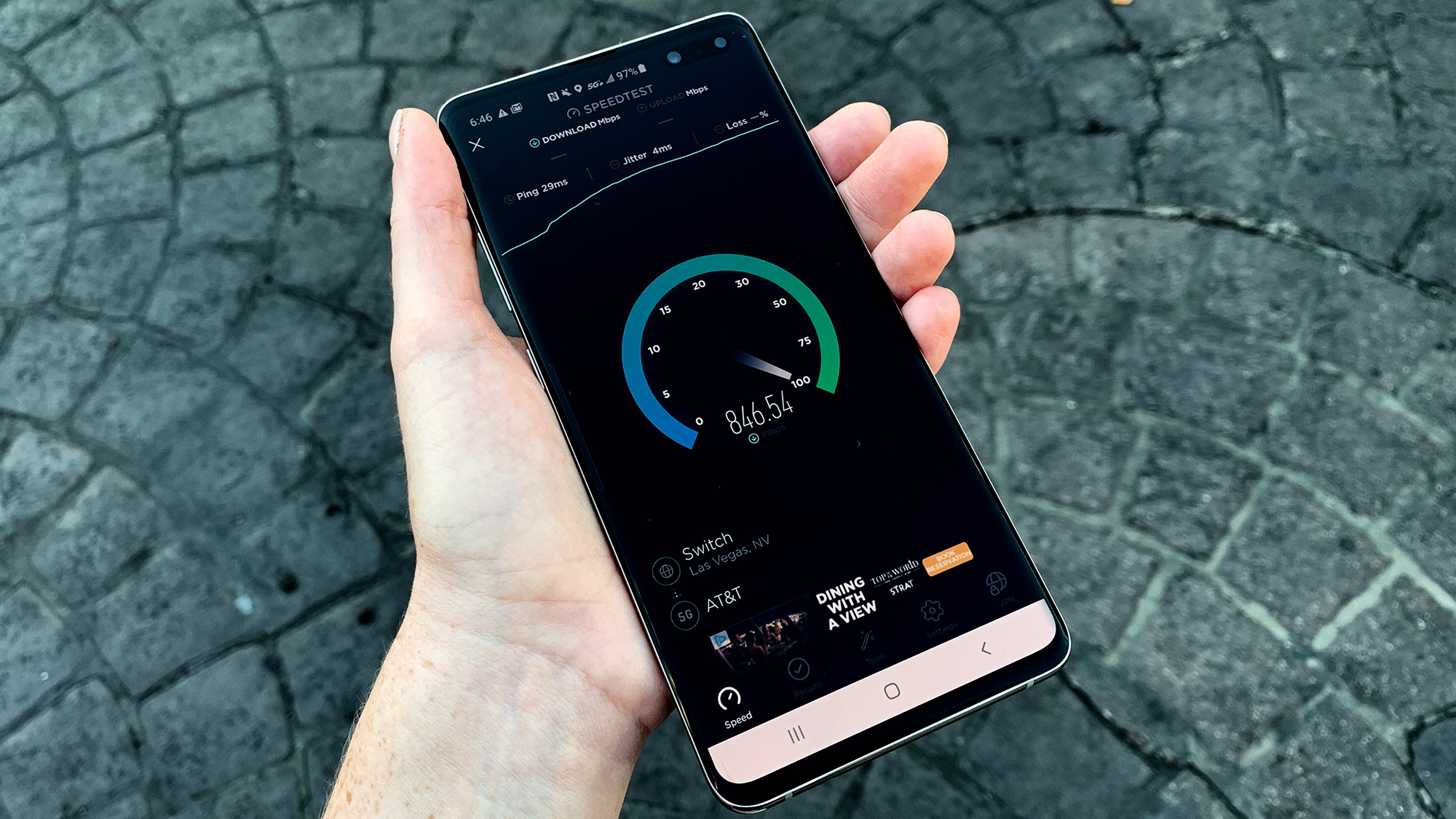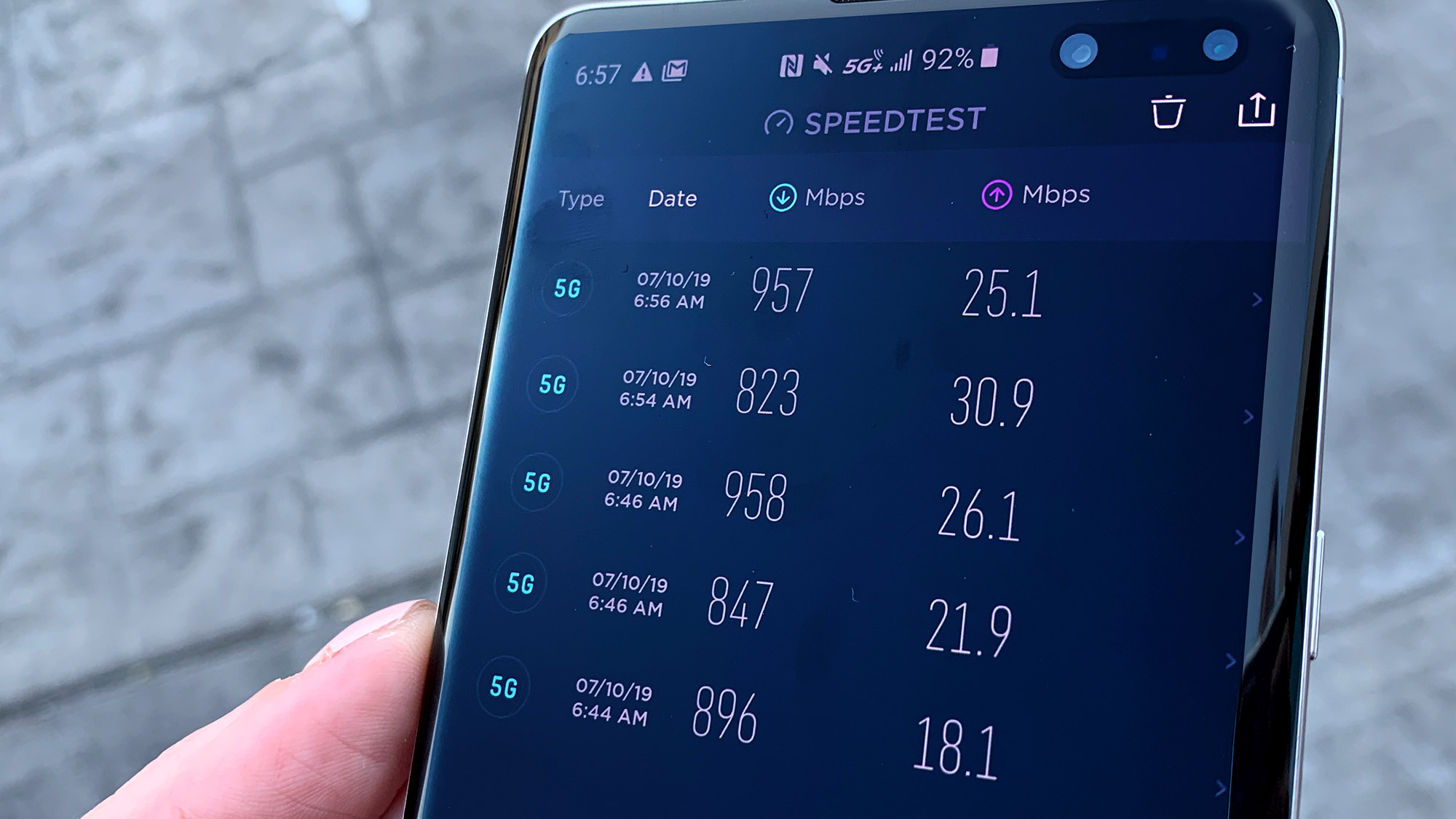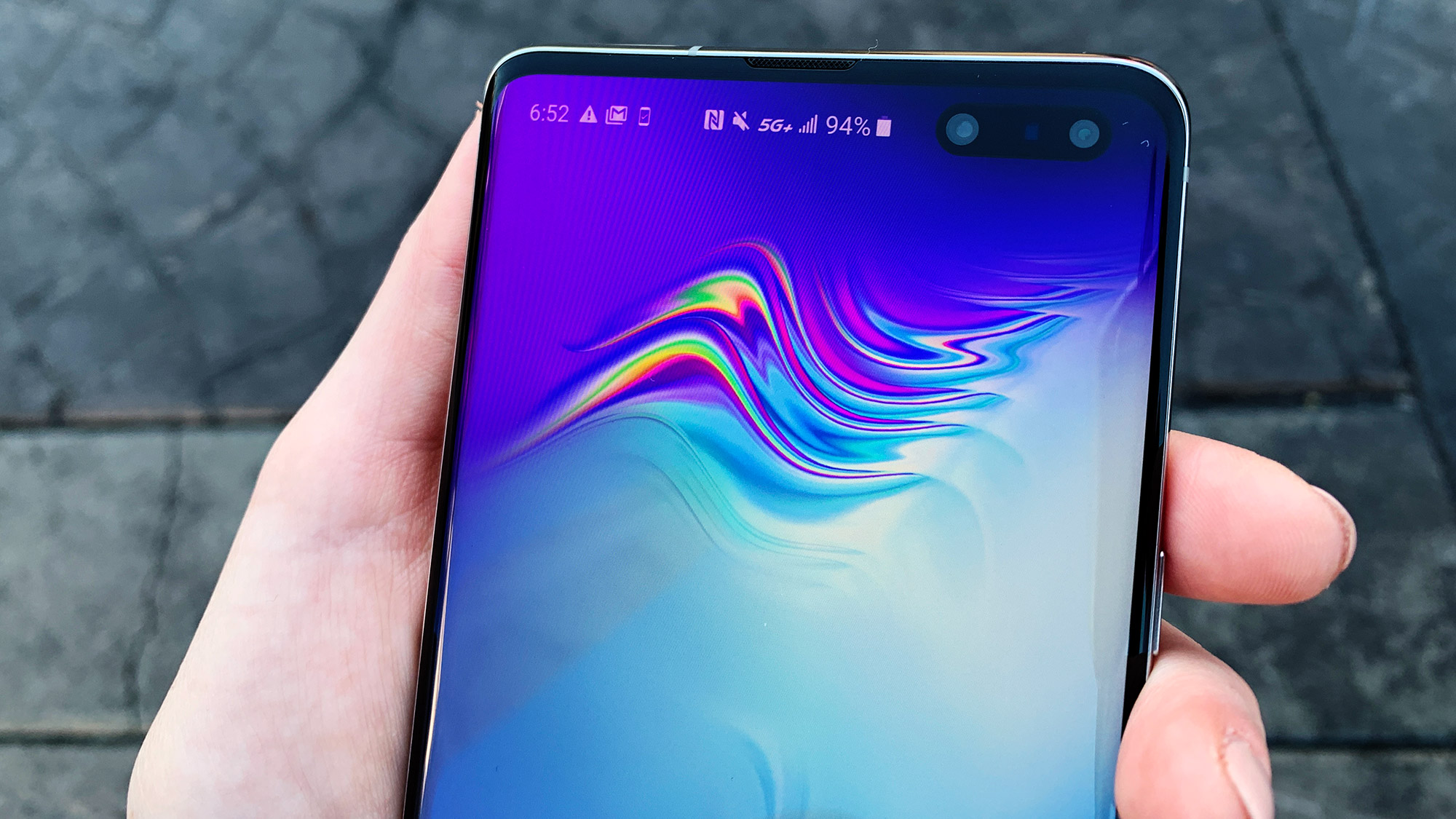AT&T 5G Speed Tests: Blazing Fast But Elusive in Las Vegas
AT&T’s 5G+ network is here, but regular folks can’t use it

AT&T 5G Testing: Key Takeaways
- We saw an average of 850 Mbps downloads speeds over AT&T’s 5G network in Las Vegas, which is very impressive. But coverage is limited for now.
- It took us only 49 seconds to download the entire Fast and the Furious movie.
- Over 5G, the PUBG mobile game downloaded in 70 seconds versus 5 minutes and 30 seconds over 4G LTE.
- You can expect faster speeds if your phone has AT&T's 5GE in a 5G area. Our iPhone hit 215 Mbps.
It was 7 a.m. and the Las Vegas sun’s punishing rays were already beating down on my head. I squinted my eyes and lifted a Samsung Galaxy S10 5G in the direction of the Flamingo hotel-casino on the Strip, hoping to catch a strong 5G signal on AT&T’s new 5G network. The Ookla Speedtest app’s download speed needle was racing toward the 1 gigabit per second mark, but stopped just short. Damn, I thought.
AT&T’s 5G network (which the carrier calls 5G+) has been live in Vegas for a few weeks, but few people can use it. AT&T was the first carrier to launch its 5G network back in December, with Netgear’s Nighthawk hotspot. But it’s the last to let average consumers who buy a 5G smartphone take advantage of the faster speeds.
To launch its 5G network, AT&T is taking a different approach than its rivals. In the 20-plus cities where AT&T 5G is available, only business customers and developers using 5G-capable devices can get access. The carrier wanted to be first out of the gate — that much is obvious, but it also knows the network isn’t quite ready for regular folks to use.
But AT&T has been refining its software, using lessons from the Nighthawk’s deployment, and working with infrastructure developers, chipset makers and smartphone manufacturers to fine-tune every aspect of the 5G network. Here’s an early glimpse at what you can expect from AT&T’s 5G+.
- More: Make the most of blazing 5G speeds with a fast VPN

Chasing 5G on the Las Vegas Strip
I hunted AT&T’s 5G signal from the Caesars Palace valet to the Fashion Show Mall, then over to the Las Vegas Convention Center, finally landing in a parking lot near the Thomas and Mack Center. I also had three Galaxy S10 5G devices with me, so when one was slowing down (or heating up, as devices can in Vegas during July), I could grab another one to try. That’s not a normal, or ideal, customer experience.
But damn if AT&T’s network isn’t fast. I didn’t cap out at a gig, but I averaged 850 Mbps at every site I visited. AT&T currently uses millimeter-wave spectrum as the basis for 5G, just like Verizon and T-Mobile. That means AT&T delivers ultra-fast speeds, but the connectivity is only strong near a cell site outfitted with a 5G node. I literally had to look for the node and lift the S10 5G in its direction to get peak speeds.
I downloaded The Fast and The Furious, which clocks in with a run-time of 1 hour and 48 minutes, in 49 seconds over 5G. At the Las Vegas Convention Center, the S10 shunted me to LTE when I tried to download PUBG Mobile, a whopping 1.86GB game, installing in 5 minutes and 30 seconds. When I tried it again on another S10 5G with a full 5G signal, PUBG downloaded in 70 seconds.
Sign up to get the BEST of Tom's Guide direct to your inbox.
Get instant access to breaking news, the hottest reviews, great deals and helpful tips.
T-Mobile also just turned on its 5G network in Vegas, and published a map of where 5G signal is strongest in Sin City. It’s a slapdash mix of off-Strip sites with high density and a smattering of Downtown Las Vegas spots. We haven’t gotten a chance to compare T-Mobile’s 5G network in Vegas to AT&T’s, but in our New York tests of the Uncarrier’s mmWave-based network, we found T-Mobile’s coverage to be widespread but slower than expected at 600 Mbps.
Good morning from the Las Vegas Strip, where I’m chasing gigabit speeds on AT&T’s 5G network. Sooooo close. pic.twitter.com/cxet9V3f0fJuly 10, 2019
5G+ vs. 5G E
You might be thinking to yourself: I’m an AT&T subscriber and I already see 5G on my phone every day. Take a second look. That logo says 5G E, and it’s very different from 5G — though still good, reliable and fast. 5G Evolution is the logo AT&T is using for its LTE Advanced network, which widened the highway of capacity and boosted 4G speeds.
I tested an iPhone XS on AT&T’s 5G E network alongside the S10 5G on 5G+, and the iPhone hit 215 Mbps, which is well above the 40 Mbps average download speed AT&T promises with 5G E. The S10 5G capped out at 845 Mbps, which is obviously much faster, but I appreciate that my non-5G phone will also see improved speeds in a 5G world.

Outlook
Like we saw with Verizon in Chicago, mmWave-based 5G networks are incredibly fast, but you have to literally chase down a signal to see the near-instantaneous download speeds that 5G promises. Verizon was faster in our testing, clearing 1 Gbps, but AT&T isn’t far behind. By comparison, Sprint’s mid-band 5G network offers more widespread coverage but much slower speeds.
Now that we’ve tested all four carriers’ 5G networks in various cities around the country, one thing is clear: The next generation of connectivity isn’t quite ready for mass adoption. But we’re getting closer.
Caitlin is a Senior editor for Gizmodo. She has also worked on Tom's Guide, Macworld, PCWorld and the Las Vegas Review-Journal. When she's not testing out the latest devices, you can find her running around the streets of Los Angeles, putting in morning miles or searching for the best tacos.
